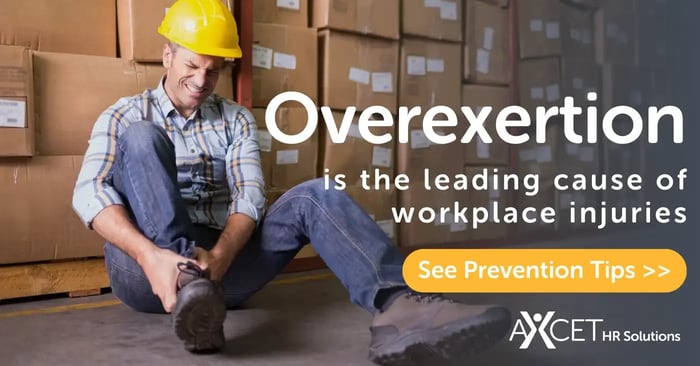By
Steve Donovan
on
Feb
04,
2020
3 min read
0 comment(s)

The early stages of workers’ compensation can be chaotic. Injuries can require immediate medical assistance, and even less dramatic cases require several different parties to communicate with one another. The process can be overwhelming for both employees and employers since both parties prefer to avoid situations like these in the first place.
One crucial part of workers’ compensation that is often lost in this chaos is the creation of a policy for returning to work. So much attention is devoted to minimizing employer liability at the time of the original incident that employers fail to pay attention to the healing process. This is a mistake because getting an employee back to work with safe accommodations is in the best interest of all parties involved.
So, look at the tips we’ve gathered below for handling an employee’s return to work after initial workers’ compensation processes. It might just make your employees and your lawyers a little happier.
Supervisors should contact an injured or ill employee as soon as possible and convey that they are invested in the employee’s health and that your business is committed to getting them back into working conditions as soon as possible with proper accommodations. This allays employee anxiety about being accepted back at work and sets expectations about what returning to work will look like later.

You’ll need to obtain professional recommendations about when the employee can return to work and with what restrictions. In order to provide this, physicians need to have a good picture of what an employee’s duties are. Communicating with physicians will also help you know if additional medical oversight is required, or if there is reason to suspect fraud. It’s also a good idea to have the medical professional tell you what the employee can do opposed to what the employee can’t do.
RELATED: Why Health and Safety Practices in the Workplace Matter >>
It’s important during times like these to maintain a positive relationship between employer and employee. Regularly speaking with an employee will also keep you up-to-date on their healing process and help them adjust to work dynamics upon their return.
This should help you identify which accommodations might be most beneficial for the employee. Consult with employees in similar roles, too, since they might be aware of job demands that you are not.
RELATED: Positive Safety Cultures - Why Every Business Should Build One >>
There are many ways employees can contribute to your business even if they’re not in the physical condition they were before an injury or illness. Consider allowing an employee to telecommute or work on a modified schedule. You’ll want to keep them in the same role and team as much as possible, but it might be appropriate to swap employee roles for a brief time. This could have the unintended benefit of cross-training your employees.
Obvious? Perhaps, but before you let the employee return to their full duties, you want to be confident that the risk of a repeat incident is minimized. If the incident occurred because safety procedures weren’t being followed, make sure that employees are following safety procedures hereafter. If equipment malfunctioned, replace it. If additional equipment needs to be purchased, consider the investment and how it may impact the injured employee.
RELATED: 8 Reasons To Hire a PEO for Risk Management >>
It’s good to have an overall policy – with plans to address all of the points above - in place for assisting employees filing claims under Workers' Compensation in their return to work.
Have questions about workers' compensation insurance? Axcet HR Solutions is here to help!
Let us know what you think...